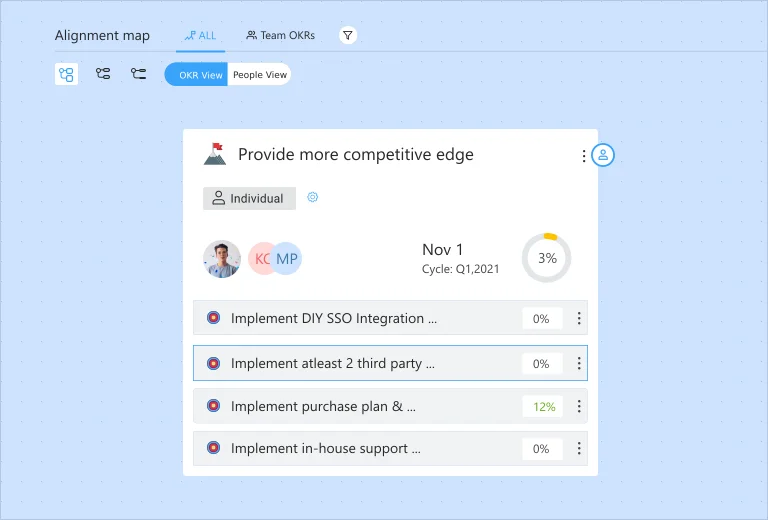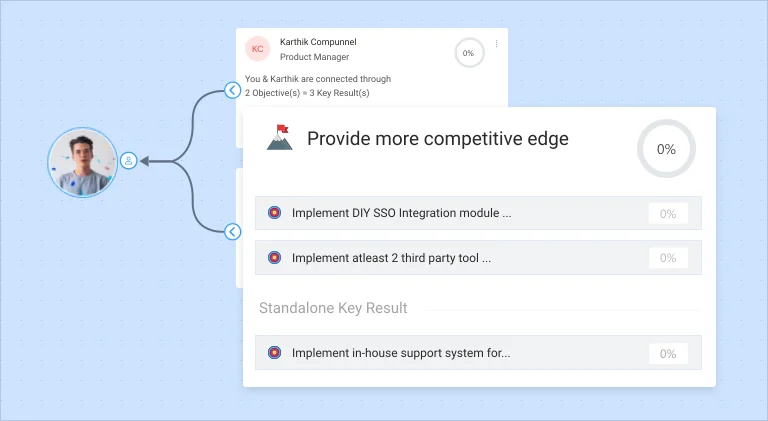In the current version of Unlock:OKR tool, using alignment maps, you can trace the objectives from the source to the contributor up to L+2 levels. Note, for the information to reflect in terms of objective or resources’ view, there are two distinct alignment map representations:
OKR View
This view depicts each OKR card as sections from the Parent OKRs to My Contributors. Parent OKRs section traces the owner of the objective. My OKRs section in the middle shows the user’s objectives logged into his Unlock:OKR profile. The user has created these objectives, or they have been assigned to him from Parent OKRs. My Contributors show up contributors’ OKR cards – a part of the objectives of the logged-in user.


Note that all information focuses on the objective and key result with the least information on the contributor(s). This is exclusive of contributors’ mappings on each objective card.
People View
In People View, you have a detailed view of how the organizational resources are mapped together in the objective. This includes the information on designations, objective count, and KR assignments. The information source is kept to resources instead of how objectives are traced. People View thus shares all the details on a single frame. You see how the contributor(s) and the logged-in user are mapped.

Every resource’s department (Team Name) shows a unique color code. People cards have the person’s name, designation, relationship with the contributor, overall progress on the OKR, and the department.

As you hover your mouse over the objective and key result, you can see your OKRs’ progress values in real-time.

Drive company success by enabling the success of every person across the company.
